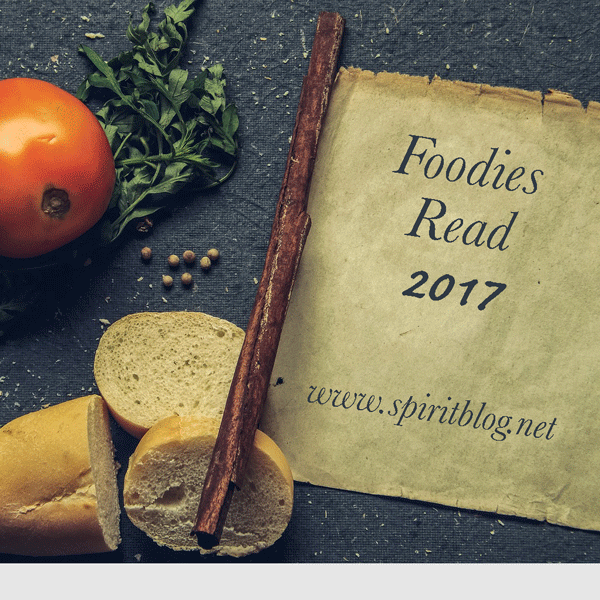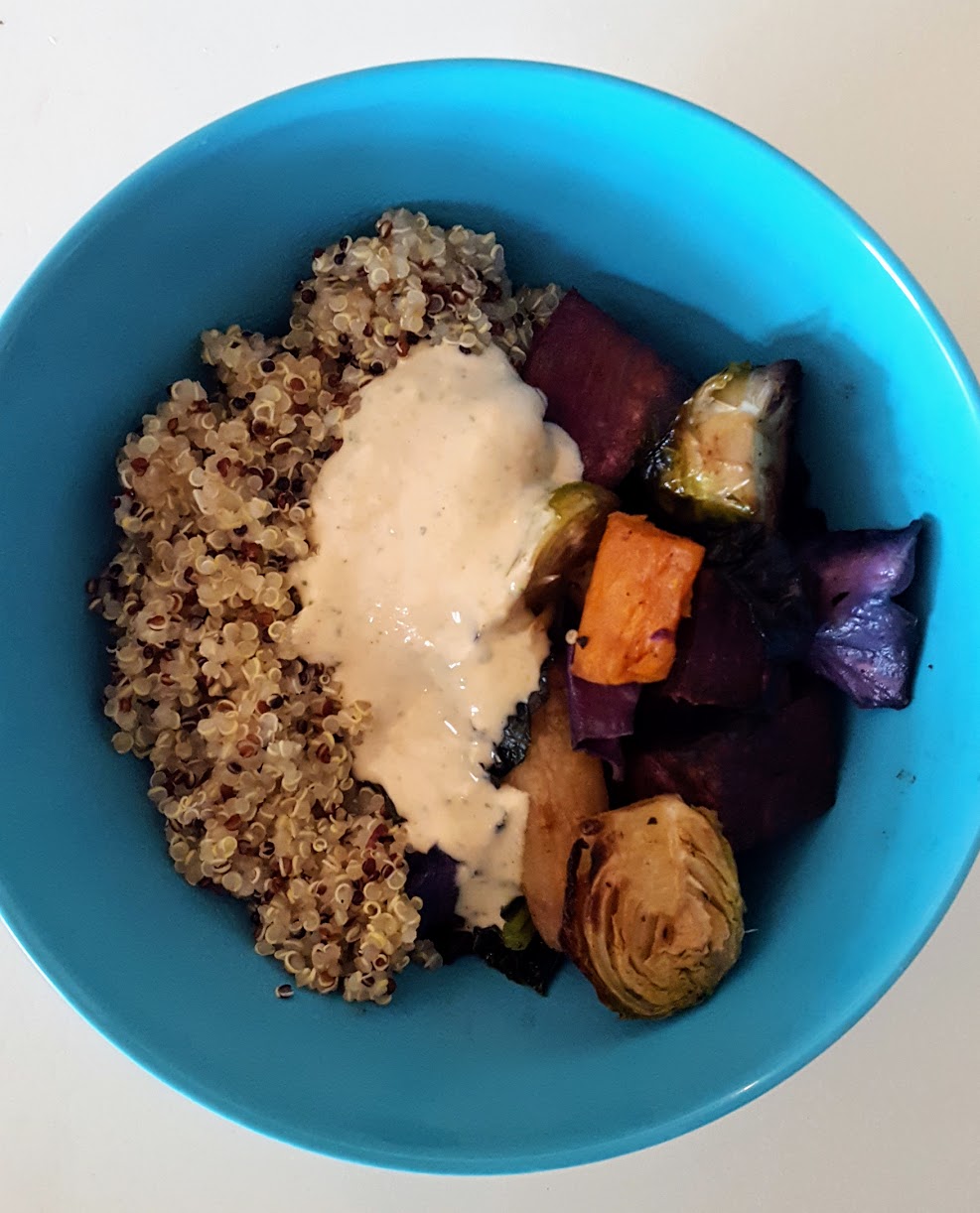Life From Scratch was an interesting book for me. I found myself avoiding reading it for the first half-ish of the book because Sasha Martin's depiction of her childhood and the many adults who let her down during it--starting with her mother who essentially abandons her children to the foster care of friends, and combined with the suicide of her beloved brother--was a downer. Martin's writing won me over in the end, and the later part of the book as she finds her place in the adult world and begins cooking her way through the recipes of the world was more enjoyable--even as she worked through her fear of abandonment and other issues of her childhood. Forgiveness is in the title and I was impressed by Martin's capacity for it--although in my opinion, she takes on too much of the blame for some of the circumstances--especially with the relationship with the family-friends (Pierre and Patricia Dumont) who fostered her for her preteen and teen years. I'm not a parent, nor have I ever fostered a child so I am not truly qualified to judge, but I found myself almost angrier at them more than her mother at times, (particularly Patricia) for some of the actions they took and their inability to put Martin's needs in priority and to seek to understand her in a mature way as the adults who took on her care. Martin was able to forge and maintain an adult relationship with her mother but not the Dumonts, and I give her much credit for even trying with both.
As a food blogger myself, I really enjoyed reading about Martin's project to cook and blog recipes from each country of the world, once a week for 195 weeks and was surprised I was not familiar with her project or blog (Global Table Adventure) as cooking global flavors is something I love to do and is of great interest to me. Hearing about her successes and reading her descriptive food writing made this part of the book fly by and caused me to check out her blog for more of it. The entire memoir has about 30 recipes worked in throughout the chapters; many are family recipes and others are favorites from the project.
When it came to making a dish, I had initially thought I would make the unusual to me, Genovese spaghetti with potatoes that her grandmother made growing up. Who doesn't have carb-on-carb *needs*? I was also called to the Samoan Chocolate & Orange Coconut Rice Pudding and the Zimbabwe Peanut Butter & Butternut Mash. In the end, I ended up visiting her blog to see if there was a recipe for the pasta/potato combination but ended up being drawn to a recipe for a White Dal Curry from Sri Lanka. I adore dal and make it often, but this one sounded really unique in its flavor combination and in just a few ingredients. In the book, Sasha has a motto of "cook global, shop local" which something I try to do as well, finding ingredients at local stores whenever possible versus ordering them from online.
The curry used a few ingredients that I had seen before at my local Indian and Asian markets--curry leaves, pandan, and fenugreek seeds. I have cooked with curry leaves and fenugreek before but not pandan--but of course when you do something at the last minute, Murphy's Law ensures that you won't find everything you are looking for. I made a field trip to town and neither the Asian or Indian markets had pandan leaves, nor did the other Asian markets or grocery stores on the way back home that I tried. My mind was set on this curry and although I could have trekked farther into Downtown and its Chinatown area and probably eventually found my fresh or frozen pandan leaves, I decided to make due with one of two options. The woman at the Asian grocery sold me a tiny bottle of pandan extract with the unique, complex and sweet scent of pandan for $1.65 and the owner of the Indian market led me to bottles of Kewda water, an extract distilled from the flower of the pandanus plant for $4.99. The extract (a dark green) is used most often in sweets and desserts, while the kewda water is used to flavor both sweet dishes in North India and Pakistan and also meat dishes in Bangladesh and Pakistan and rice dishes in India. I felt like the Kweda water ended up being the best option for the curry.
I couldn't find a good guide to how much of the kewda water to use in place of the 3 to 4 pandan leaves the recipe called for so I went with my gut after tasting it and used a scant tablespoon to start, and ended up adding a little extra for a full tablespoon by the end. I don't know if what I got was close to the flavor of Martin's dal but I found it delicious--the pandan was present, along with the curry leaves but without overpowering the other ingredients. I served it with the rice I had handy, a black rice grown in Thailand.
I've included the ingredients for Sasha's recipe below with my changes in red and the steps I used to make it.
White Dal Curry
Slightly Adapted from Sasha Martin via Global Table Adventure
(Serves 4)
About 2 Tbsp vegetable oil (I used coconut oil)
1 onion, chopped
4 cloves garlic, crushed
1/2 tsp turmeric (I overshot this accidentally and used about 1 tsp)
1/2 tsp whole fenugreek
2 cups masoor dal (red lentils)
4 cups water (I used 1/2 water, 1/2 mild veggie broth)
1 cinnamon stick
3-4 pandan leaves (I used 1 Tbsp Kewda water)
5-8 curry leaves
1/4 cup to 15-oz coconut milk
sea salt and pepper to taste
Rinse dal well, picking through carefully to remove any foreign bits. Drain and set aside.
Add the oil to a medium-large pan and heat over medium heat. When hot, add the onions and garlic and until onions are soft and just starting to brown. Add the turmeric and fenugreek seeds and cook for another 2 to 3 minutes (or as Martin says, "until the house smells of happiness"). Add the pandan leaves if available and the curry leaves and allow them to toast in the oil for a few minutes.
Add the dal, cinnamon stick and water/broth (at this point I added the Kewda water) and bring the mixture to a boil. Stir well so that the leaves and cinnamon stick are mixed in and under the dal to infuse. Reduce heat to a gentle simmer, cover and allow to simmer gently away until lentils are tender, stirring occasionally and adding more liquid if needed. (Note: Martin states that the longer you cook it the more flavors infuse and to cook it at least 45 minutes. She cooks her dal about 75 minutes.I find that makes the lentils too broken down for me, so I cooked mine about 50 minutes total.)
Before serving, add coconut milk as desired. I added about 1/2 a can. Taste for seasoning, adding salt and pepper if desired. Serve with rice or flat bread for dipping. Enjoy.
Notes/Results: My White Curry Dal may have been more yellow than white (for some reason I doubled the turmeric to 1 tsp) and not had the actual pandan leaves (this time) but it was quite delicious and different than the usual dals that I make. Pandan flavor is hard to describe--to me it is an aromatic blend of sweet floral, citrus and a little bit of nutty and piney herbal notes. I really loved the taste of this dal with the cinnamon and the pungent curry leaves. The dal thickens as it sits and I ended up adding the rest of the coconut milk before putting away the leftovers. You can add additional coconut milk or broth if you want a looser, more brothy dal. I plan to make this again when I can secure some pandan leaves and try the difference, but I'll also make it just like this again. I'm happy the book gave me a new favorite dal to enjoy. Thanks Debra!
The deadline for this Cook the Books round is right now, TODAY ;-) and Debra will be rounding up the delicious entries at the CTB site shortly after. If you missed out on this round and like books, food, and foodie books, consider joining us for June/July when Simona of briciole will be hosting with Mastering the Art of Soviet Cooking: A Memoir of Food and Longing. Hope you join us!
I am linking this post up with Foodie Reads 2017as my fifth entry. You can check out the May Foodies Read linkup, hosted by Heather at Based on a True Story, to see what everyone is reading this month.
Since it's a soupish dish--especially when you add more coconut milk, I am linking up to Souper Sundays, hosted here at Kahakai Kitchen. Each Sunday we feature delicious soups, salads, and sandwiches from friends around the blogosphere--please join in if you have any to share. Here's this week's post and linkup.






































